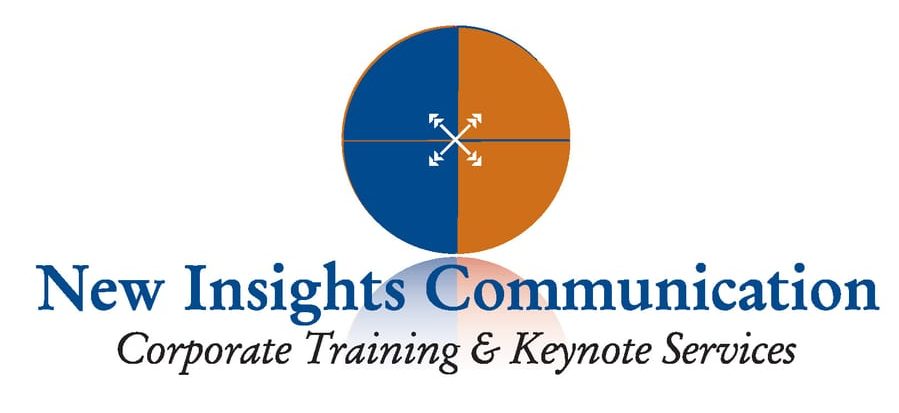Now you know what compassionate Empathizer communicators (E-types) feel are the biggest roadblocks to good communication today on the two-way communicator highway. But what do Instigator (I-types) communicators think blocks off important communication avenues? Overall, I-types push hard to forget about the past and move on, because they know one-way talks block positive communication, much like running on fumes in an empty gas tank.
GROUP BRAINSTORMING THE “TALK TO ME” WAY
I recently divided a group of 100 HR managers by their communicator type in a training exercise at McGohan Brabender in Dayton, Ohio. On the left side of the room were about 60 Empathizer or E-type communicators. On the right side of the room, were 40 Instigator or I-type communicators. Each small group of same-type communicators came up with their own answer to the question: “What’s the biggest roadblock to good communication?” (Before you read down the list, come up with your own answer to this very important question).
INSTIGATOR VIEWPOINT OF ROADBLOCKS TO POSITIVE COMMUNICATION
1. PERSONAL BELIEFS. I-types say holding onto preconceived ideas impedes your ability to listen cooperatively, and causes inattentive or careless talking, much like taking your eyes off the road while driving.
2. NOT LISTENING. I-types correctly observe that when others can “see the vision” held in their minds, there is a greater chance that this map will be used for the long communication journey ahead.
3. NOT COMMUNICATING. I-types know that speakers are discouraged from speaking up again if listeners are not able to repeat verbatim what was said or do not demonstrate an understanding of the speaker’s comments.
4. FAILURE TO USE TWO-WAY TALKS. I-types are intimidated by uncontrolled emotions; they view “negativity” as one-way communication fraught with bad feelings, communication that won’t allow for co-equal and fair discussions.
5. CREATING A DISCONNECT. I-types believe that good ideas are killed off when there is a relationship disconnect or dictatorship.
6. MULTI-TASKING. I-types believe that “multi-tasking” disrupts careful listening that aids the strategic decision-making process, because multi-tasking interrupts careful listening, learning and sorting through difficult data.
7. BLOCKED COMMUNICATION. I-types vow to use a two-way communication system, because they know one-way talks are unstable over the long haul, much like running on fumes in an empty gas tank.
8. DISTORTED INFORMATION. I-types are afraid of distorted information; they also don’t like “impression management” that is designed to make someone believe as you do and overlook what you have done.
9. STUCK SPINNING YOUR WHEELS IN RUT OF A MISUNDERSTANDING. I-types don’t mind rocking the boat. They believe that leading somewhere is better than being nowhere.
So, that’s what passionate I-types view as the leading causes for communication breakdowns, or a failure to communicate, that makes everyone feel like a failure. But what do our sensitive Empathizer communicators think?
THE WHOLE BRAIN OF THE BALANCED COMMUNICATOR
Together, E- and I-types make a “whole brain” that includes a high Emotional I.Q. and a high Logical I.Q. “Adopting the strengths” of your opposite communicator type, leads to a synergy that makes everyone check the box of, “My manager is a good communicator.”
ABOUT COMMUNICATIONS PSYCHOLOGIST AND KEYNOTE SPEAKER DENNIS E. O’GRADY, PSY.D.
Dr. Dennis O’Grady consults with corporations and business leaders and managers who desire to improve their communication to improve their results. He is developer of the “Talk to Me” communication system, and author of three books, the latest “Talk to Me: Communication Moves To Get Along With Anyone.” Dr. O’Grady gratefully acknowledges the McGohan Brabender team for hosting this state-of-the-art “Effective Leadership Communication” seminar for Human Resource managers and leaders in the Dayton region.
EMPATHIZER VIEWPOINT OF ROADBLOCKS TO POSITIVE COMMUNICATION
In an earlier article, I discussed the Empathizer communicator perspective of roadblocks to good communication:
1. PERSONAL EMOTIONS
2. NOT LISTENING
3. CLOSE-MINDEDNESS
4. NEGATIVITY
5. IDEA KILLERS
6. INTERRUPTIVE LISTENING
7. EGO
8. LACK OF CONFIDENCE
9. MISUNDERSTANDING
Is your company “studying and analyzing” what turns weak or bad communication into something more positive? Are you studying good communication moves with your life partner, too? Good move.
